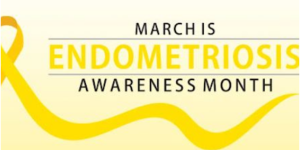Understanding Endometriosis: Risks, Impact, Diagnosis, and Symptoms

March is recognized as Endometriosis Awareness Month, drawing attention to a complex and often misunderstood condition that affects an estimated 6% to 22% of women in their reproductive years. That translates to nearly 176 million women globally, across all ethnicities and socio-economic backgrounds. Endometriosis is defined by the presence of endometrial-like tissue growing outside the uterus, which can lead to pain, infertility, and a range of other symptoms.
Endometriosis: An Enigma
Dr. Sujata Kar, Obstetrician and Gynecologist, explains that endometriosis is characterized by the growth of endometrial glands and stroma outside the uterine cavity, most commonly in the pelvic region but potentially affecting any organ. This ectopic tissue responds to hormonal cycles, leading to inflammation, adhesions, and in some cases, infertility.
Key Risk Factors for Endometriosis:
| Risk Factor | Description |
| Reproductive Age | Most common in reproductive years |
| Early Menarche | Early onset of menstruation |
| Prolonged & Frequent Cycles | Longer and more frequent menstrual cycles |
| Nullipara | Having never given birth |
| Cryptomenorrhoea | Hidden menstrual bleeding |
| Family History | Relatives with endometriosis |
How Endometriosis Affects Daily Life
Endometriosis significantly impacts women’s physical, emotional, and social well-being, often during their most productive years. It is not a lifestyle-related disease and can affect women from all walks of life. Delayed diagnosis and mismanagement often result in reduced quality of life and work productivity.
Symptoms and Treatment Options
Recognizing the symptoms of endometriosis is crucial for early intervention. Common symptoms include:
| Symptoms | Treatment Options |
| Painful periods | Analgesics, Hormonal therapy |
| Pelvic cramps | GnRH analogues, Progestins |
| Pain during sexual intercourse | Mirena, Surgery |
| Pain with bowel movements | Laparoscopic Surgery |
| Pelvic or low back pain | OCPs (Oral Contraceptive Pills) |
| Persistent pelvic pain | Conservative surgical treatments |
Diagnosis
Endometriosis is typically diagnosed through laparoscopy followed by histological examination. However, the severity of symptoms doesn’t always align with the extent of the disease, which can make diagnosis challenging. Pain—especially during menstruation, intercourse, or bowel movements—is the most common indicator.
Treatment for Endometriosis
Management of endometriosis involves a combination of medical and surgical treatments, including:
- Pain-relieving medications
- Hormonal therapies to suppress menstrual cycles
- Minimally invasive laparoscopic surgery
- Hormonal IUDs and oral contraceptives
- Conservative surgical approaches for chronic or severe cases
The choice of treatment depends on symptom severity, age, and whether fertility preservation is a concern.
Living and Coping with Endometriosis
Living with endometriosis involves more than medical treatment—it requires ongoing support, lifestyle management, and emotional care. Finding a knowledgeable and empathetic healthcare provider is essential. Open communication, understanding treatment side effects, and incorporating stress-reducing habits can help improve quality of life.
Final Thoughts
Endometriosis is a deeply challenging but manageable condition. Raising awareness and promoting early diagnosis are key to reducing its impact. With the right support and treatment plan, many women can lead fulfilling lives despite the diagnosis. Education and advocacy can help break the silence around this often invisible illness—making room for better care and understanding.
